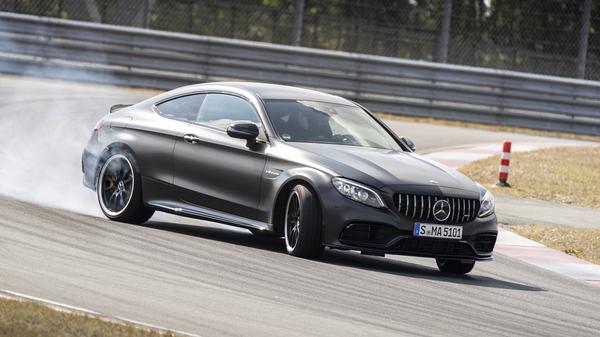Guide
Muscle cars
As American as Coca Cola and drive-in movies, muscle cars now have a following the world over – here’s why


Words by: Andrew Woodhouse

Additional words by: Dan Trent
Last updated on 17 May 2023 | 0 min read
What is a muscle car?
There’s no exact definition but, traditionally, they are usually American made (or influenced) two-door coupes with large, powerful engines driving the rear wheels built with simplicity and affordability in mind. As such muscle cars have always represented accessible performance for everyday drivers, and have sold in huge numbers over the years each with fanbases fiercely loyal to particular models or brands. Famous examples include the Ford Mustang, Pontiac GTO, Chevrolet Camaro, Dodge Charger and many more besides.
What defines a muscle car
A classic muscle car is defined by its huge engine, which is how the name came about in the first place. While there have been muscle cars with six- or even four-cylinder motors over the years traditionally they will be powered by a V8, and the bigger the better. Back in the day this would typically be around five litres, though some were as big as seven litres or even larger, the huge power typically delivered to the rear wheels to maximise acceleration off the line in keeping with American ‘quarter-mile’ drag racing culture where many owners enjoy their cars to this day. This can also result in spectacular ‘burnouts’ where the rear wheels spin up and are another part of muscle car culture’s somewhat rebellious image.
To match this macho driving style the look of muscle cars is also very distinctive, with most models based on regular saloons but with sleeker, coupe or ‘fastback’ bodies. On more extreme versions bonnet scoops, stripes, fat tyres, spoilers and other embellishments are all part of the look, and customisation and modification is also a big part of the classic muscle car scene.
To match this macho driving style the look of muscle cars is also very distinctive, with most models based on regular saloons but with sleeker, coupe or ‘fastback’ bodies. On more extreme versions bonnet scoops, stripes, fat tyres, spoilers and other embellishments are all part of the look, and customisation and modification is also a big part of the classic muscle car scene.
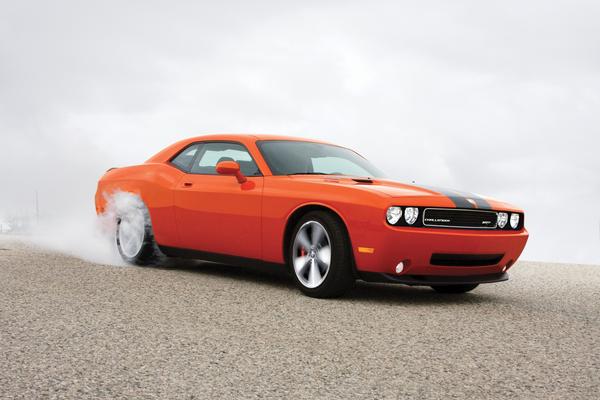
Driving a muscle car
Muscle cars are big, brash and loud and will definitely get you noticed – especially in the UK where they’re not seen as often.
As the name suggests, they’ve got a lot of ‘muscle’, and those with V8 engines tend to sound great. Unlike the more traditionally European hot hatches, sports cars and supercars muscle cars are less focused on top speeds or track influenced lap times and are more about turning heads and soaking up the vibes of being part of a wider community of enthusiasts. Our review of the Ford Mustang goes into more detail on the practicality and driving experience of a muscle car.

Muscle cars in drag races
When it comes to drag races and the famous quarter-mile muscle cars have made their name as the performance cars of choice. Their combination of engine power and rear-wheel drive makes them perfectly suited for this kind of competition. Some models even feature special technology like the burnout enabling ‘line lock’ braking system on the Mustang designed for heating up the rear tyres for more grip when competing in ‘run what ya brung’ grassroots drag racing.
Over in America the majority of these events are overseen by the National Hot Rod Association (NHRA). There are, however, niche organisations that arrange drag races specifically for classic muscle cars, and even electric vehicles.

What’s the difference between a muscle car and a sports car?
The terms sports car and muscle car are sometimes used interchangeably, but they’re different beasts in a lot of ways.
Sports cars usually have smaller, more efficient engines and can have different mechanical layouts, including rear- or mid-mounted engines. As a general rule, sports cars are made for speed with an emphasis on sophisticated suspension, weight-saving and aerodynamics and muscle cars are made for pure power. American muscle cars are normally heavier and simpler than European sports cars as well, which means they don’t generally handle as well. As the joke goes, muscle cars are the first to enter a corner and the last to leave it, though it's fair to say some have found success in historic touring car races against much smaller and more nimble competitors.

When was the first muscle car made?
The 1949 Oldsmobile Rocket 88 is commonly accepted as being the first muscle car. This title is usually given in retrospect (and sometimes disputed), but the Rocket 88 marks the first time a high-performance engine was worked into a smaller, lightweight chassis. Built to meet customer demands for speed and power, the Rocket 88 became one of Oldsmobile’s best performing models and one of its most important cars.
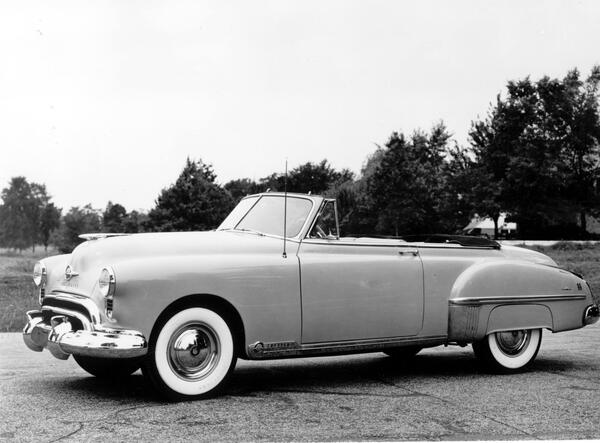
When was the muscle car era?
It’s commonly accepted that America’s peak muscle car lasted from the mid-60s through to the early to mid-70s.
With the Oldsmobile Rocket 88 selling well and NASCAR growing in popularity, there was an appetite for fast cars in the US. In the 1960s, engines were growing in terms of size and output, the arrival of definitive muscle cars like the Pontiac GTO, Ford Mustang and Chrysler 426 Hemi all contributing to an explosion in popularity. Muscle cars continued to refine their engines and styles over the next decade, though the cars generally got bigger, heavier and actually slower in many cases. A fuel crisis in 1976 effectively killed them off, but the muscle car era is frequently remembered as one of the most exciting times in automotive history and has enjoyed something of a rebirth in recent years.
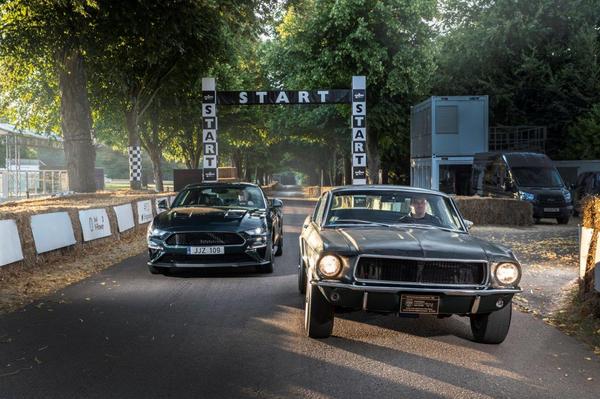
Best classic muscle cars
There’s plenty of competition when it comes to the best classic muscle car… Would you agree with our list?
- Oldsmobile Rocket 88
- 1968 Ford Mustang
- Chevrolet Camaro
- Chevrolet Monte Carlo
- Chevrolet Impala
- Plymouth Barracuda
- 1970 Plymouth Road Runner
- Dodge Charger
- Dodge Challenger
- Pontiac GTO
- Pontiac Firebird
Electric and hybrid muscle cars
Ford has reinterpreted the Mustang name for its Mach-E Mach-E electric SUV, the GT version winning over our very own Mustang fan (and owner), Rory Reid with its reboot of classic muscle car driving manners. And as electrification spreads across the industry we’re seeing new twists on the muscle car idea from manufacturers in the US and Europe. AMG has, for years, built its image around a very German muscle car ideal by putting huge, powerful V8 engines into regular Mercedes saloons and coupes. More recently it has, however, downsized the petrol engine to a four-cylinder and adopted F1-influenced hybrid technology for its innovative C63 S E, its 680 horsepower just as crazy as before but generated in a very different way. The Polestar 1 is another example of a modern, hybridised twist on the classic muscle car format while some would argue Tesla and its fixation on ‘ludicrous’ acceleration is in itself an electric reinvention of the muscle car fixation with straight-line speed.
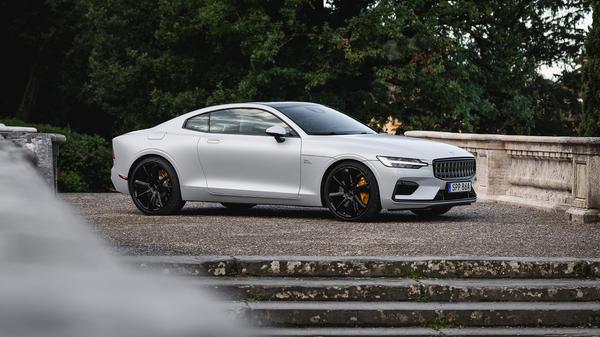
Can I buy a muscle car in the UK?
The more specialist and rare muscle cars tend to be imported from America, meaning they’re left-hand drive and built to US market specification and can be more complicated to own as a result. The current Ford Mustang is an exception, and is the first of its kind to be built in right-hand drive.
If this is important you may also come across some older Australian muscle cars like the Holden Monaro (which was sold in the UK as a Vauxhall) or Commodore (Vauxhall VXR8), and the Ford Falcon. Older Mercedes-AMGs like previous generations of the C63 Coupe with their big V8 engines also offer a taste of the muscle car magic, albeit tuned and designed more to European roads and tastes.
